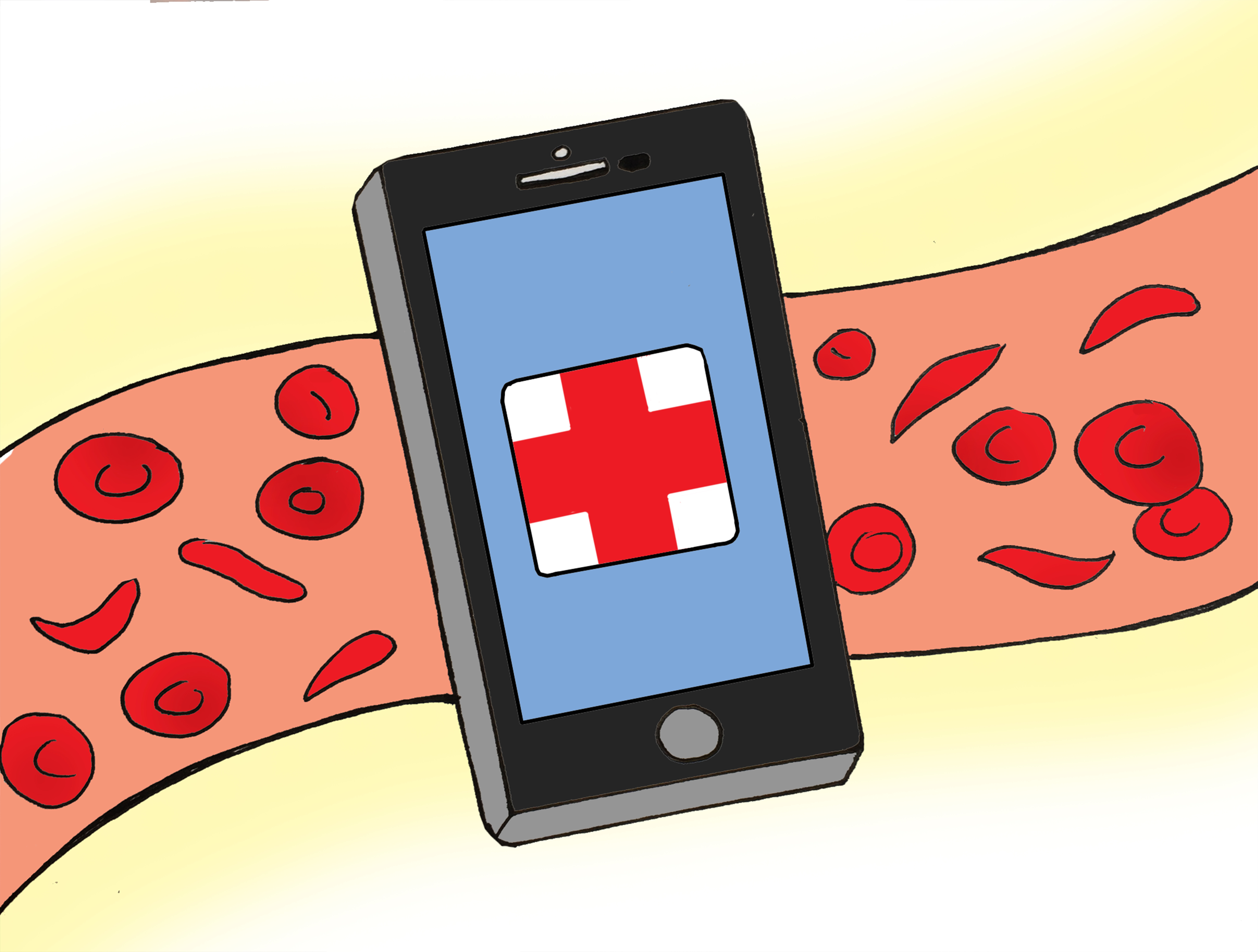
A recent Yale co-authored paper presented a new platform for the detection of sickle cell disease — a 3D printed smartphone attachment that will allow for quick data collection both in the U.S. and in developing countries.
The paper, published in the journal Nature Scientific Reports on Oct. 22, was co-authored by researchers from the University of Connecticut, Harvard Medical School, Massachusetts Institute of Technology and the Yale School of Medicine. The researchers developed a small attachment for the Samsung Galaxy S4 that uses the phone’s built-in camera and an Android application, which they wrote, along with magnets, a disposable microcapillary — a narrow tube and optical components. The device tests small blood samples for sickle cell disease. The research was funded by an American Heart Association Scientist Development Grant, UConn’s Research Excellence Program and National Institutes of Health’s Fogarty International Center.
“If a child is known to have sickle cell disease in the first year, then there are treatments available and treatments can prolong the lifespan of the child,” said Ionita Ghiran, professor of medicine at Harvard Medical School and paper co-author. “The problem is that nobody can detect it … and by the time it’s obvious, it’s way too late. So we were hoping that by using our device we’d be able to prevent death or at least postpone it.”
The testing platform developed by the researchers is based on magnetic levitation. A small blood sample is mixed with the element gadolinium and other chemicals and loaded into a microcapillary. Inside the device, the blood sample is illuminated and magnified. The magnets then levitate the red blood cells. Because sickle cells exposed to gadolinium have a higher density than healthy red blood cells, they will not levitate as high. Using the smartphone camera and the application, the heights of the cells are plotted and analyzed. The mean height value and standard deviation are sent for diagnosis.
In theory, a minimally trained person could perform this testing and patients could be diagnosed remotely, opening up possibilities for the platform to be used in developing countries, said Savas Tasoglu, mechanical engineering professor at the University of Connecticut and co-author of the paper.
Ikbal Sencan, diagnostic radiology postdoctoral associate at the Yale School of Medicine and paper co-author, said the study has important possibilities for communities in developing countries where medical clinics and expensive equipment may not be present.
“You only need [a minimally trained person] in that town so they can actually help with basic data collection,” she said. “They can actually send the results to the trained physicians, so they can get diagnostic results very easily.”
The technology would also allow people living with the disease in developed countries to check their own sickle cell levels as a function of time and share them with their physicians, possibly reducing the number of visits to a clinic, Tasoglu said.
According to John D. Roberts, Medical Director of the Adult Sickle Cell Program at Yale-New Haven Hospital, sickle cell disease is prevalent in sub-Saharan Africa as well as in Southern India and, to a lesser extent, in the Mediterranean. However, Roberts said that he would be concerned about the reliability of the device’s results.
Some challenges remain with development of the technology. According to Ghiran, a major barrier to development of this technology is the different camera positioning on different smartphones, which prevents one attachment from working with different models. For example, the device cannot be used with any iPhone or even with other Samsung models.
Still, Tasoglu hopes to commercialize his idea. He said he wants to start a company using this technology not just for sickle cell detection but also for other applications including cancer cell detection.
The co-authors said this paper is the first in a set of research, and that they are also exploring detection of anemia and of malaria by the same method. Tasoglu said they are also looking to diagnose different subtypes of sickle cell disease.
Up to 25 percent of people living in Central and West Africa have sickle cell disease, according to the Sickle Cell Disease Association of America, Inc.
Correction, Wednesday, Nov. 4: A previous version of this article misstated the paper of publication and the funding sources for the research.







